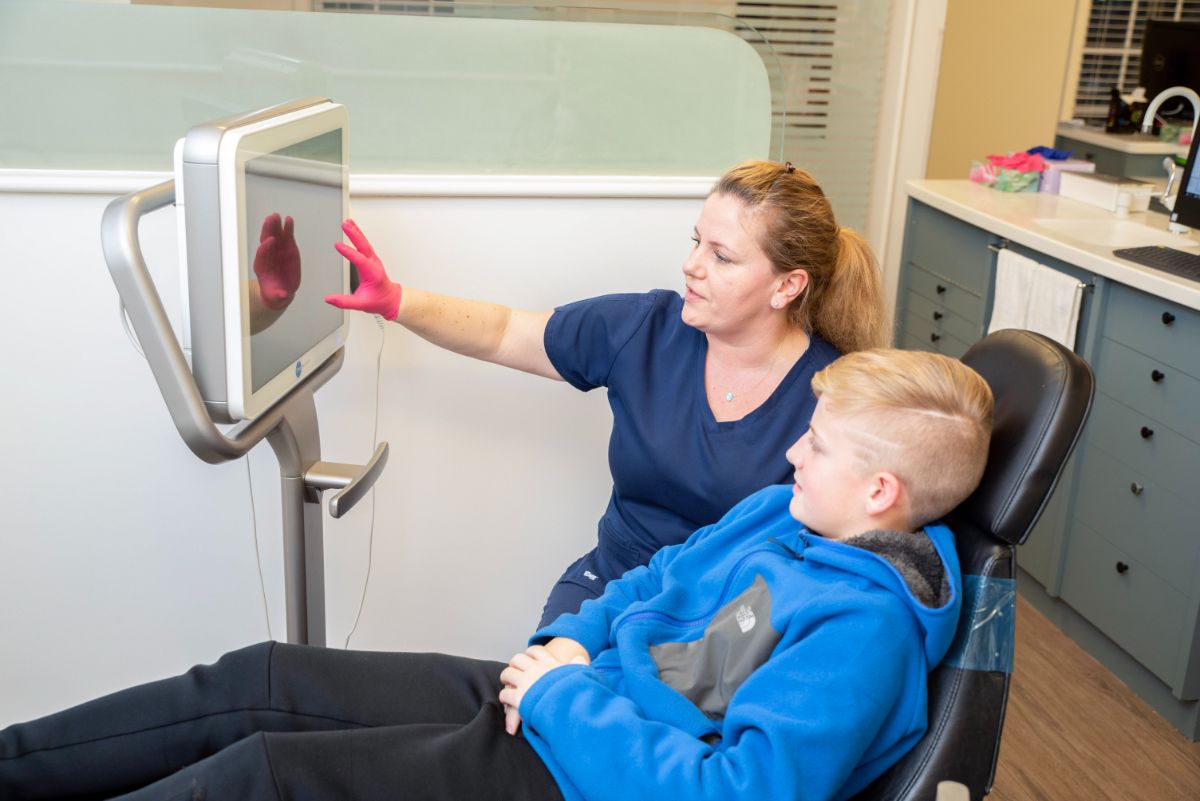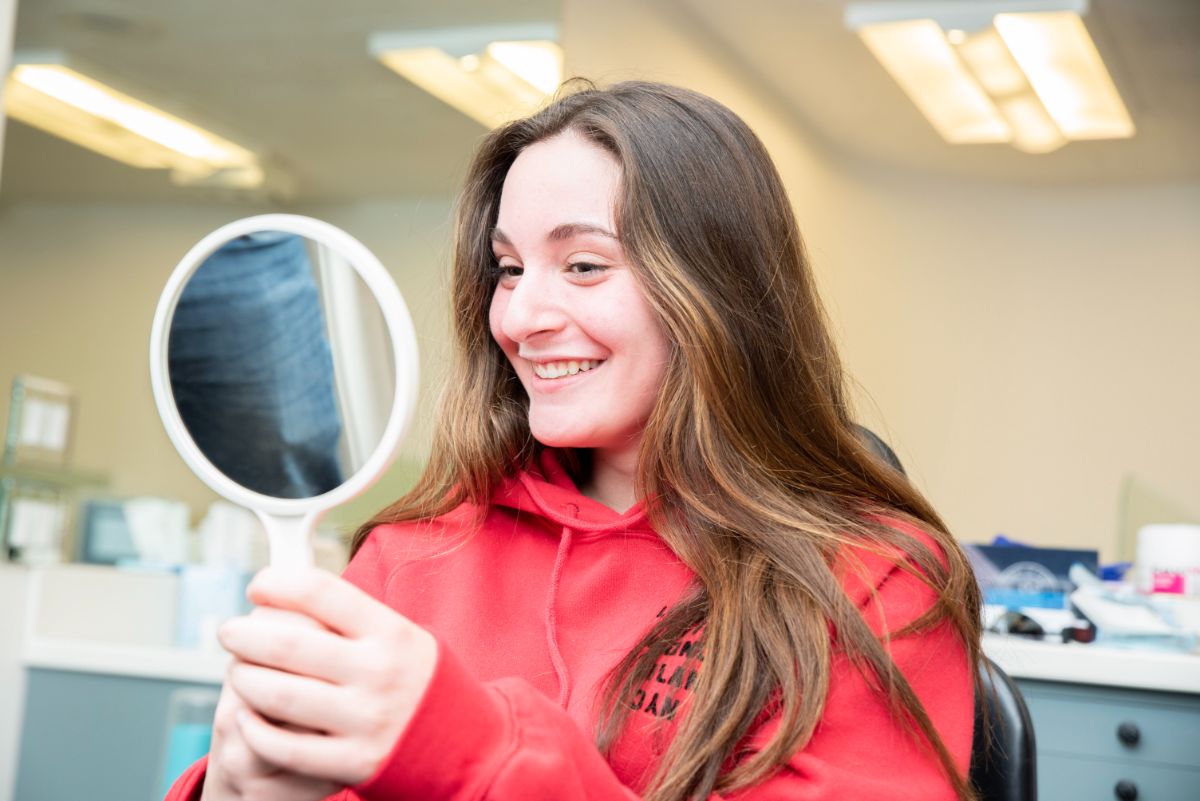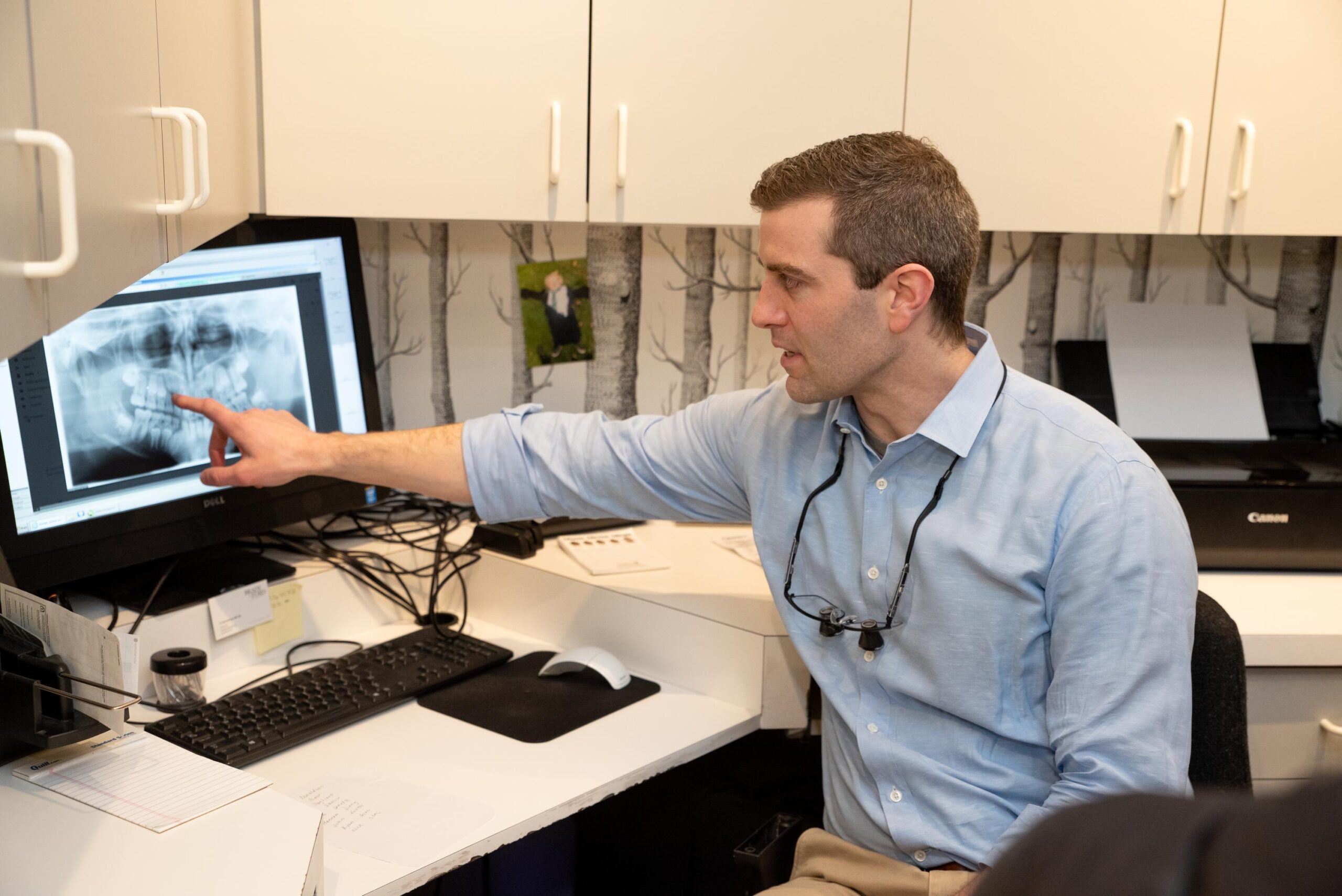The team at Brady Orthodontics is proud of you for sticking to your treatment plan and taking good care of your teeth throughout the orthodontic process! Now that you’re close to the end of the active phase of treatment, it can be tempting to think you’re totally out of the woods. While you won’t have to deal with braces or clear aligners anymore, there is a second phase of treatment still to come: retention. We’ve got everything you need to know about retainers to make your transition to this second phase as simple as possible!
Retention rounds out the treatment process and plays a vital role in maintaining your newly straightened smile. Since retention relies on retainers (surprise!), it’s a good idea to familiarize yourself with this orthodontic staple before you get your braces off or use your last aligner. Keep reading to learn more about the basics of retainers, the different types we offer, and how regular wear will give you long-lasting results!
What exactly are retainers? What do they do?
Did you know that in the first year post-treatment, your teeth can begin shifting back towards their original positions in just a few days? Throughout your orthodontic journey, your teeth are consistently supported by braces or clear aligners. Once we remove that support, they’ll be at an increased risk for relapse. This natural phenomenon describes the tendency our teeth have to shift as we get older. It can happen even if you’ve had orthodontic treatment, but the good news is, there’s a simple way to ensure your teeth stay in the post-treatment positions—wearing your retainer!
To understand how retainers work, it helps to know a bit about what happens during treatment. Your teeth aren’t set in your jaw like posts surrounded by concrete. Instead, each tooth is held in its socket by elastic ligaments that attach the roots to the bone. These ligaments are living tissue affected by tooth movements, and this attachment is what allows for the movements your teeth make during treatment. When we put tension on and around your teeth with braces or clear aligners, new ligaments and even bone are formed.
We call this the remodeling phase of treatment, and once it’s complete, the tissues, ligaments, and bone involved in the process will need time to stabilize. That’s where retainers come in! It can take several months to a few years for the new position of your teeth to become more permanent. Wearing your retainer regularly will help hold them in place as this occurs. Without a retainer to help your teeth stabilize, they’ll almost always revert back to their pre-treatment positions at some point.

How long will I need to wear my retainer?
Current orthodontic wisdom suggests that some type of retainer will need to be worn at least part-time for the rest of your life to achieve the best results. But don’t let that scare you—wearing your retainer will become part of your daily routine before you know it! After a while, wearing it a few nights each week will likely be all you need to keep your teeth in place.
Like anything new, it may take a little while to get used to your retainer. Occasionally it can affect your speech, though this is generally temporary and resolves on its own. It’s important to wear your retainer as directed by Dr. Brady, even if there is some minor discomfort in the beginning. Failure to do so can undo all your hard work and allow the teeth to shift back to their old positions.
What are the different types of retainers?
There are two types of retainers: fixed and removable. When deciding which type is best for you, Dr. Brady will consider your specific needs, your preference, and the overall compliance expected.
Fixed retainers
Fixed retainers are sometimes referred to as permanent or bonded retainers. They consist of a thin wire that’s bonded behind the bottom and top teeth. Because this bonded wire can hold your teeth in the ideal alignment over a long time, fixed retainers often have excellent and lasting outcomes.
If you have a fixed retainer, you’ll need to brush and floss carefully to ensure it stays clean. Since the wire stretches across several teeth, dental hygiene is similar to what a patient in braces experiences. You won’t ever have to remember to wear them, which can be an added benefit (especially if you’re prone to losing things!)
Removable retainers
There are a couple of different options available when it comes to removable retainers. The Hawley and Essix models are both custom-designed to fit your mouth for the best results.
Hawley retainers
Hawley retainers are one of the oldest types of retainers. They’re made of stainless steel and kept in place by wrapping a wire around your teeth. That wire has been combined with an acrylic arch that rests against the roof of your mouth, and it can be adjusted to continue minor movement of the front teeth if needed. Although many orthodontists are moving away from using Hawley retainers, they can still be helpful in certain cases.
Essix retainers
Essix retainers look very similar to the clear aligners used with the Invisalign system. The trays are made of transparent plastic and molded to the unique shape of the patient’s mouth. Essix retainers may cover the entire arch of the teeth or only go from canine to canine. This type of retainer is very subtle and should last as long as you need it, provided you care for it properly.
Cleaning your teeth is more manageable with removable retainers, but you will have to remember to wear them daily. They can also be easy to misplace or damage, so you’ll also need to be mindful of where it is at all times and be careful when handling it. When you aren’t wearing your retainer, be sure to place it in a secure case.

Keep your smile looking its best with Brady Orthodontics
Modern orthodontic wisdom tells us that most patients will need to wear some type of retainer after their teeth have been straightened, but don’t worry! Caring for your retainer will become just another part of your daily routine before you know it.
At Brady Orthodontics, our expert team is committed to finding exactly the right orthodontic treatment for you, including the type of retainer that will serve you best! For more information about retention after orthodontic treatment, get in touch with us today to schedule a visit or FREE consultation at our Winnetka office. We’re here to help you achieve a healthy, beautifully aligned smile that lasts a lifetime!
 Free Consult
Free Consult



